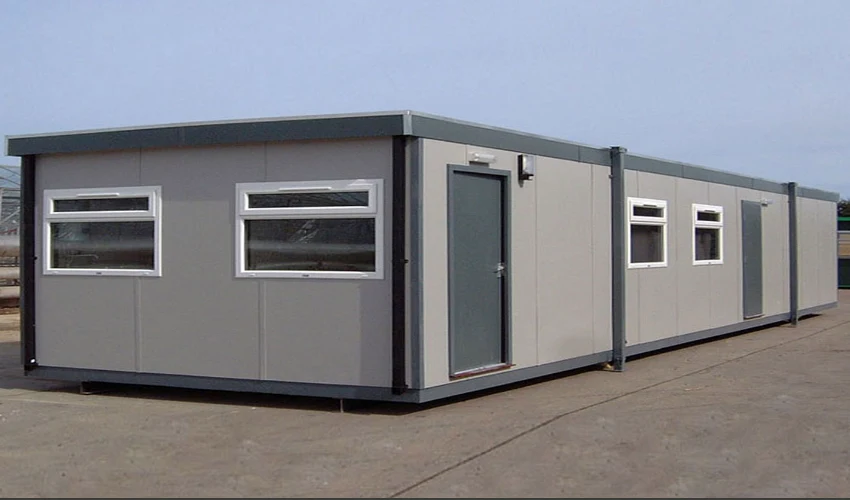Jackleg cabins, a unique form of construction in American history, have evolved over the years to become a symbol of practicality, self-sufficiency, and ruggedness. From their humble beginnings as temporary shelters to their place in modern-day culture, these cabins have undergone significant changes. In this article, we explore the history and evolution of Jackleg cabins, from their inception to the present day.
The Origins of Jackleg Cabins
Jackleg cabins trace their origins back to the early pioneers of the American frontier. These early settlers, primarily in the 18th and 19th centuries, were in need of quick, inexpensive shelter as they expanded westward. The term “jackleg” refers to the way the cabins were built using a simple method that did not require specialized tools or extensive carpentry skills. The term “jackleg” is often used to describe something that is improvised or built with limited resources, and that perfectly captures the essence of these early cabins.
The earliest Jackleg cabins were built using logs from the surrounding forests, with the structure consisting mainly of large timber logs stacked horizontally to form walls. The logs were notched at the corners to hold them in place, creating a basic yet functional shelter. The roofs were typically made from rough-hewn timber or sod, depending on the materials available. The lack of advanced construction techniques and tools meant that these cabins were often rustic and simple, designed primarily for survival rather than comfort.
The Rise of Jackleg Cabins in the 19th Century
As settlers continued to push westward, the need for more robust and lasting structures grew. By the mid-19th century, used jackleg cabins for sale became a common sight across the American frontier. The cabins were used for a variety of purposes, from homes for pioneer families to temporary shelters for loggers, miners, and trappers. Their ability to be built quickly and with minimal tools made them ideal for the harsh conditions of the wilderness.
The design of Jackleg cabins evolved during this time. Builders began to experiment with different methods of securing the logs, leading to improvements in the structural integrity of the cabins. Some cabins featured larger and more sophisticated frames, while others incorporated more durable roofing materials like wooden shingles or tin. Additionally, the interiors of these cabins began to reflect a growing desire for comfort and functionality, with rudimentary furniture and stoves added for heating and cooking.
Despite these improvements, Jackleg cabins still had their limitations. They were small, dark, and prone to the elements. However, their affordability and ease of construction ensured their place in the history of American frontier architecture.
The 20th Century and the Decline of Jackleg Cabins
By the early 20th century, as industrialization and the development of more advanced building techniques gained momentum, Jackleg cabins began to fall out of favor. The rise of the modern construction industry meant that traditional log cabins were often replaced by more permanent and standardized forms of housing. However, the legacy of the Jackleg cabin was not entirely lost.
In the early 1900s, the Jackleg cabin became associated with rustic cabins and cottages, often built for vacation homes or retreats. These cabins, while still using similar log construction methods, were built with more care and attention to detail. Many Jackleg cabins from this era were used as weekend getaways, particularly in rural or wooded areas. The charm of the simple, rustic design became more appreciated, and people sought to embrace a return to nature.
The Revival and Modern Use of Jackleg Cabins
While the traditional Jackleg cabin may have fallen out of common use for everyday living, the charm and appeal of these structures have led to a resurgence in recent years. The modern Jackleg cabin has become popular as a cabin retreat or a small, off-the-grid home. Many people today seek out these cabins for their historical significance and their ability to offer a peaceful, self-sufficient lifestyle in today’s fast-paced world.
In recent years, the construction of Jackleg cabins has experienced a resurgence, largely driven by a desire for a return to simple living and an off-the-grid lifestyle. These modern Jackleg cabins often incorporate the same log construction techniques as their predecessors but with updated materials and methods. Many feature high-quality insulation, modern electrical systems, and contemporary comforts, while still retaining the rustic charm that defines the original Jackleg cabins.
Some builders have also embraced sustainable and eco-friendly construction practices, using reclaimed wood, solar panels, and rainwater collection systems to create environmentally friendly Jackleg cabins. These cabins are often seen as a way to live more sustainably and connect with nature, aligning with broader trends toward minimalism and self-sufficiency.
The Cultural Significance of Jackleg Cabins
Beyond their architectural evolution, Jackleg cabins hold significant cultural importance. They are a symbol of American pioneer spirit, representing resilience, resourcefulness, and independence. For many, these cabins embody the essence of frontier life, where survival was a daily challenge and ingenuity was essential for success.
The Jackleg cabin also plays a role in the cultural memory of the American West. It reminds people of a time when settlers were carving out a life in the wilderness and building communities from the ground up. Today, many people are drawn to the idea of living in a Jackleg cabin as a way to reconnect with the past and escape the complexities of modern life.
Conclusion
The history and evolution of Jackleg cabins reflect the ingenuity and resourcefulness of early settlers and their ability to adapt to the challenges of the American frontier. From their humble beginnings as simple shelters to their current status as symbols of rustic charm and off-the-grid living, Jackleg cabins have undergone significant changes. Today, they continue to captivate those seeking a simpler way of life, offering a glimpse into the past while providing a sustainable, self-sufficient future.
